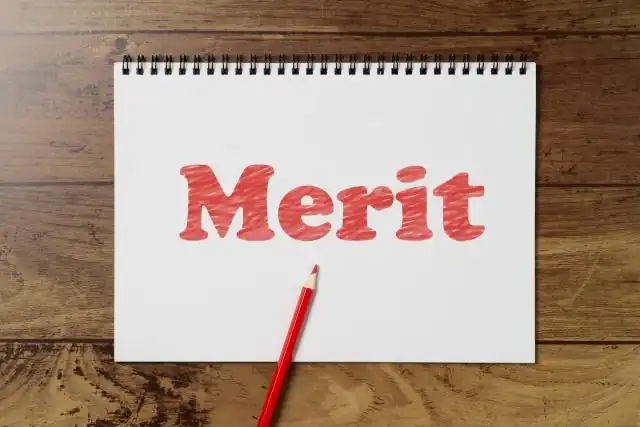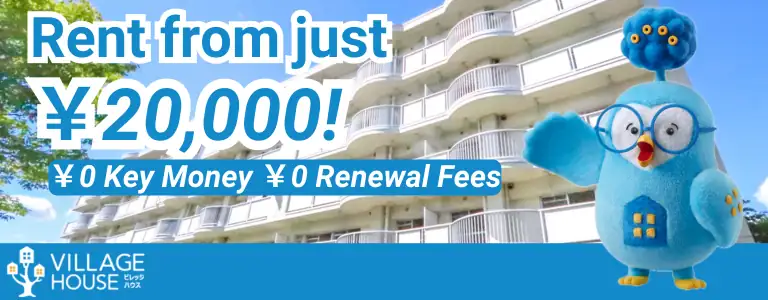Some people may wonder, “Is it better to live above or on the first floor of an apartment building?” or, “I want to know the pros and cons of living on the second floor.” If you’re contemplating whether to live in a second-floor apartment, it’s important to fully understand the advantages and disadvantages in order to avoid any regrets after signing the lease.
In this article, we will introduce the pros and cons of living in a second-floor apartment and considerations to keep in mind when making a decision. We hope you find this article to be a useful reference.
At Village House, we offer over 1,000 affordable and wonderful properties across Japan. If you’re looking for a place to live, be sure to check out our website!
Characteristics of people who are suitable for a second-floor apartment

・Those who are concerned about security
・Those who prioritize good sunlight and ventilation
・Those who prefer using stairs for easy access
・Those who want to ensure privacy
・Those who want to avoid damages from disasters, etc.
Advantages of living in a second-floor apartment

Better view than the first floor
Second-floor apartments generally offer a better view compared to the ones on the first floor. If the surroundings are pleasant, you can enjoy an open landscape, which is sure to benefit your mental health. Another attractive feature is that the light of the morning and evening shines into the room, allowing you to enjoy different views at different times of the day.
However, during the summer, higher apartments will receive stronger sunlight, making them feel hotter. For those who can tolerate the heat or maintain a comfortable room temperature with an air conditioner, the sunlight won’t be much of an issue. More importantly, being able to enjoy a “fantastic view from the window” is a great benefit in everyday life.
Good ventilation enhances air circulation
Compared to rooms on the first floor, rooms on the second floor are less likely to be in the shadow of surrounding buildings and have good sunlight and ventilation. Good ventilation helps prevent humidity from accumulating, making it easier to change the air in the room. Additionally, good ventilation also makes laundry dry faster and can help prevent mold growth.
However, depending on the location, even the second floor may not get much sunlight, so be sure to check the surrounding environment and the location of the building when choosing a property.
Better security
Living on the first floor can raise security concerns, and the visibility from passersby might make you hesitant to open your windows or curtains. On the other hand, second-floor rooms allow you to open your windows without worrying about glances from passersby, providing a more comfortable living environment.
Moreover, in terms of crime prevention, the risk of break-ins through windows or balconies on the second floor is lower than on the first floor. However, it’s still risky to leave the windows open when you’re going out or while sleeping, so it’s important not to let your guard down even if you are on the second floor. Always keep your guard up in your daily life, regardless of where you live.
Less intense shaking during earthquakes
During earthquakes, apartments on higher floors will experience stronger and more prolonged shaking due to long-period vibrations. On the other hand, second-floor apartments experience less shaking, so the risk of secondary damage from furniture falling over is smaller. However, even on the second floor, it’s important to properly secure furniture and appliances to minimize the risk of secondary damage.
Disadvantages of living in a second-floor apartment

Risk of causing noise problems
When living on the second floor or higher, it’s important to be mindful of noise since there are other residents living below. In particular, footsteps and the sound of dragging a chair are likely to pass through to the floor below, so it is important to pay attention to your everyday activities.
To prevent causing noise problems, consider laying down carpets or rugs to dampen the sound of your footsteps, or placing soundproof mats under furniture.
Higher rent compared to the first floor
Typically, the rent for rooms on the second floor tends to be higher than that for the first floor. If keeping rent costs low is your priority, opting for a first-floor apartment may be the better choice.
Insects and cockroaches
If you hate bugs and cockroaches, you may regret living on the second floor. Being a lower level compared to the third floor and above, the second floor can be more susceptible to the intrusion of pests like flies, mosquitoes, and cockroaches.
DIY insect and cockroach prevention methods

- Keep the interior clean at all times
Maintaining cleanliness in your apartment can help prevent bugs and cockroaches from appearing. Regular cleaning, at least once a week, can effectively reduce dust and food scraps that serve as food for cockroaches. In particular, be sure to focus on cleaning the gaps between appliances and under the bed, as cockroaches are more likely to hide in narrow, dark spaces.
- Seal any gaps that may allow entry
In order to reduce the appearance of cockroaches and other insects, seal any gaps that could serve as a route of entry. Areas that require particular attention are doors, windows, ventilation fans, air conditioning units, and drain pipes.
Gaps in doors and windows can be easily sealed by using commercially available gap-sealing tape or rubber tubing. Holes through which air conditioner hoses pass should also be sealed with special putty or rubber sheets.
Moreover, keeping the ventilation fan running 24/7 can help prevent cockroaches from entering. If you can’t keep the fan running continuously, consider installing a fine mesh filter to further reduce the chances of pests getting in.
- Seal and dispose of food waste every day
Make it a habit to seal and dispose of food waste every day. Leaving food waste out can attract flies and cockroaches. Throw away sealed food waste in a garbage bin covered with a lid.
- Do not let cardboard and newspapers pile up and throw them away immediately
Avoid accumulating cardboard boxes and newspapers and dispose of them immediately. Damp cardboard and newspaper can serve as food for cockroaches. If you used cardboard boxes for moving, arrange for them to be collected as soon as possible.
Considerations when choosing a second-floor apartment

・Check the age of the apartment
As a building ages, gaps in the building increase, making it easier for bugs to enter. If you’re considering living on the second floor, it’s advisable to look for properties that are less than 10 years old, as they are less likely to be infested with insects, spiders, and other pests.
・Check if there are forests and parks nearby
To prevent insects from entering your home, check to see if there are any forests or parks nearby. Properties surrounded by nature tend to attract more insects, making it more likely for them to enter your home.
・Check if there is enough sunlight
When choosing a second-floor apartment, it’s important to check if the room gets enough sunlight. Sunlight affects how easily your laundry dries.
If you choose an apartment in the corner, there will be two windows, allowing more sunlight to enter the room and creating a brighter environment. Make sure to pick an apartment that suits your lifestyle and provides a comfortable living space.
・Check if the stairs are easy to use
If you are going to regularly use the stairs, it is important to check where they’re located and how far they are from the apartment. Apartments closer to the stairs tend to easily pick up the sounds of footsteps, so if you prefer a quiet environment, it is best to avoid them.
Some properties may only have emergency stairs, making it inconvenient to get around. If you are concerned about security, it’s a good idea to look for properties with non-public corridors and an auto-lock feature for peace of mind.
・Check the cleanliness of the garbage disposal areas and common spaces
Apartments with clean common spaces and garbage disposal areas tend to be less susceptible to pest and insect infestations. Less garbage and dust mean fewer pests are attracted.
Some properties post their cleaning schedule for common areas at the entrance, allowing you to assess how well the building is maintained. On the other hand, if common areas are cluttered with flyers or garbage, the property may be unhygienic and should be avoided.
At Village House, there are no security deposits, key money, renewal fees, or handling fees. Rent starts from an affordable 20,000 yen! If you want to save on initial costs and rent, feel free to contact us.
Related articles:
- Pros and Cons of Living on the Top Floor of an Apartment Building
- The Pros and Cons of Living in a Wooden Apartment Building – Are Steel and Concrete Buildings Really Better?
- Should You Rent a South-Facing Apartment? All the Pros and Cons!
- Should you Choose a Corner-Unit Apartment? Advantages, Disadvantages, and the Difference Between a Corner and a Middle Unit
- Pros and Cons of Moving into a Ground Floor Apartment

Hello, I’m Machiko Doi, a freelance writer who writes about housing and living in Japan.
I live in an 80-year-old house that I inherited from my grandparents along with my two shelter cats and daughter.
We live a relaxed life while repairing the house.
I like to cook vegetables from the garden and fresh fish caught by my father, and enjoy them with cold beer on a hot day or hot sake on a cold day.



